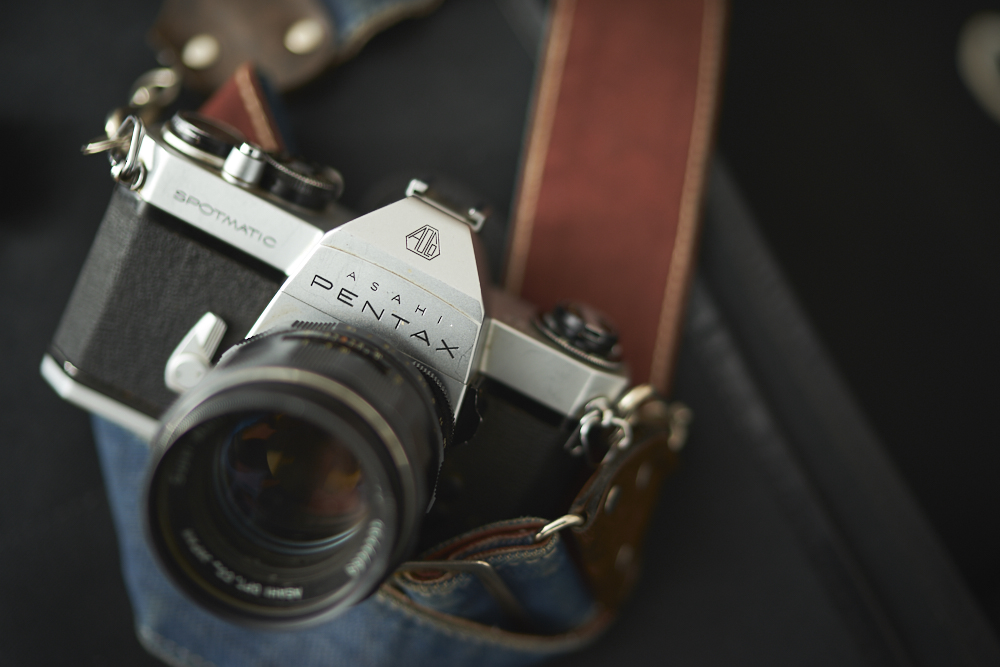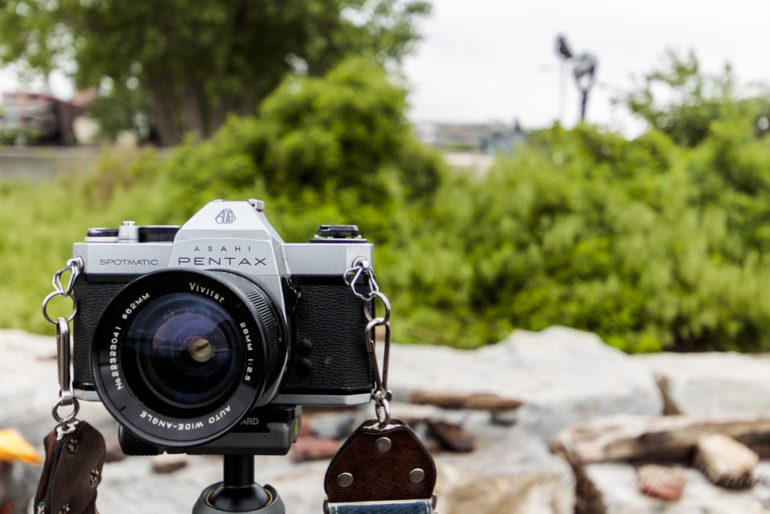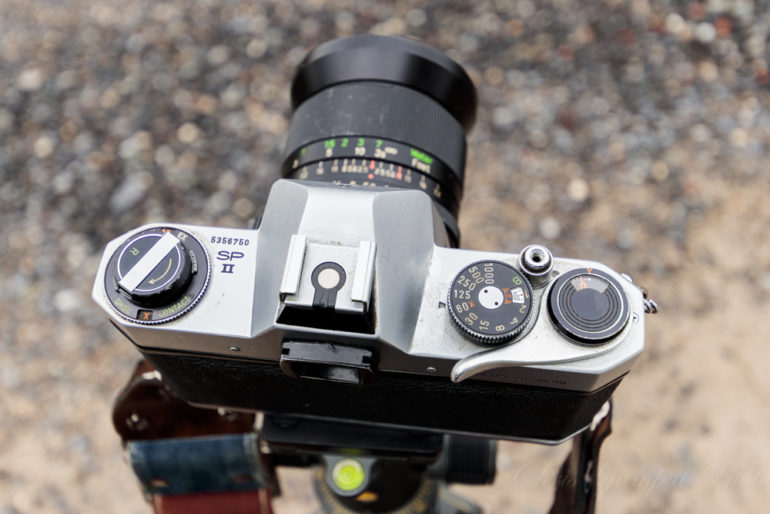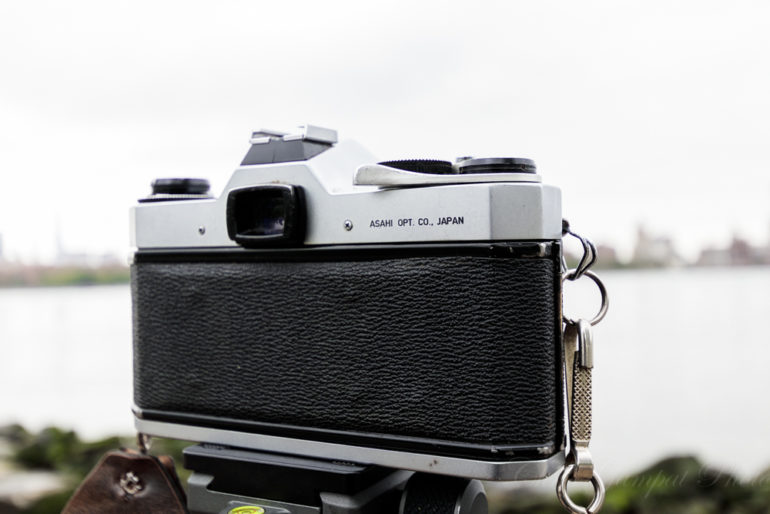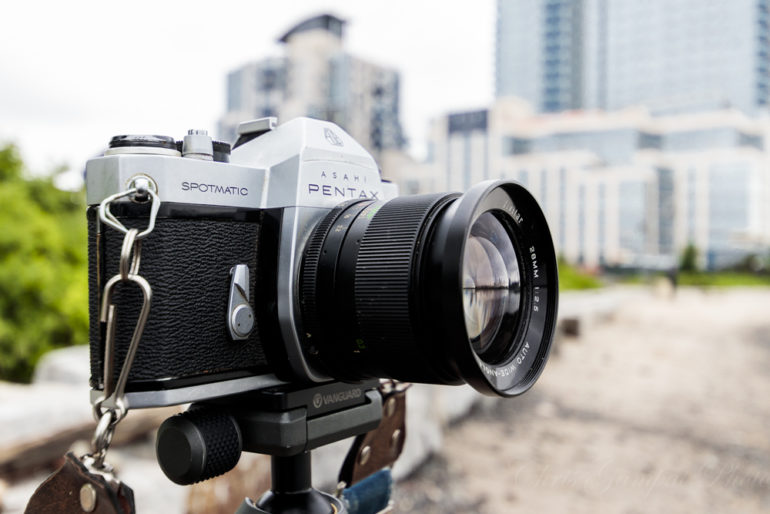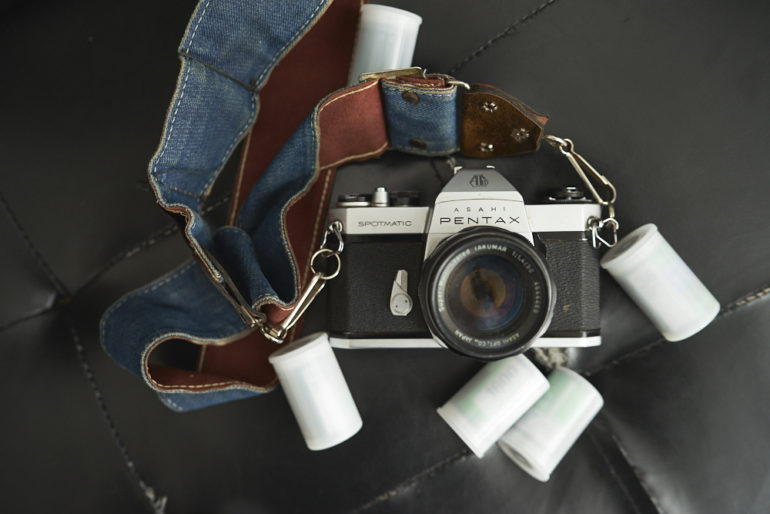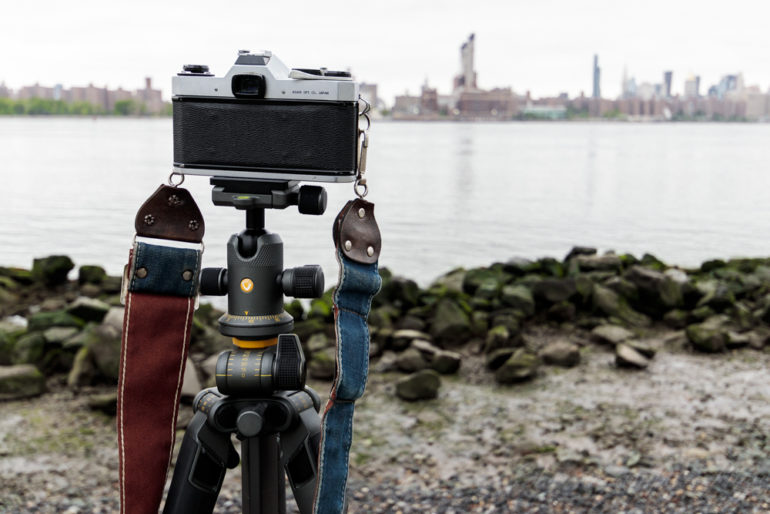Pentax has has a number of great cameras over the years, but if you’re going to get something cheap and reliable, one of the best options has to be the Pentax Spotmatic. The little camera is one of the first options to offer a TTL (through the lens) light meter though otherwise is completely mechanical. With that said, it still truthfully doesn’t need a battery or the light meter to operate–which is a lot light many Leica, Zeiss and Voigtlander rangefinders. That means that even if the battery dies, you can still shoot and get perfectly usable photos if you’ve got just a bit of light metering knowledge. The Pentax Spotmatic was designed during a time when folks typically shot photos in full shutter speeds vs 1/3rd options of today. So with that said, you’ll want to pay close attention to the film that you’re loading up and your own intentions when it comes to shooting.
Pros and Cons
Pros
- Incredible build quality
- Pretty much all you could truthfully ask for when it comes to a fully manual film SLR
- Great lens options from Pentax, Vivitar (Yes, seriously), Zeiss and others
- Very, beautiful and smooth film advance
- You’ll surely hear it and know when the camera and the film aren’t moving
Cons
- Can sometimes be tricky to load and get the film correctly onto the spools and through the advance teeth
Gear Used
We tested the Pentax Spotmatic with the Pentax 50mm f1.4 and the Vivitar 28mm f2.5. LomoChrome Purple, Fujifilm Provia 100, Lomography 100 Color Negative and Lomography 400 Color negative were all used. Lomography NYC developed the film.
Tech Specs
The following tech specs were taken from Camerapedia.
- Type: SLR body
- Manufacturer: Asahi Optical Co.
- Year of launch: 1964
- Films: 35mm, speeds up to 1600 ASA
- Viewfinder: pentaprism eye-level viewfinder
- Lens Mount: Pentax/Praktica screwmount (M42)
- Shutter: Focal plane shutter, speeds 1 – 1/1000 second, flash sync 1/60 second
- Metering: CdS TTL metering (stopped-down manual match-needle metering system) EV 1.7 ~ 18 (ISO 100) ASA range 20-1600 (on original Spotmatic)
Ergonomics
The Pentax Spotmatic is a an all manual camera that has a whole lot of charm to it. By today’s standards, it’s a pretty basic SLR camera. It has a shutter, a prism, focusing, shutter speeds, apertures, a film advance, ISO, a rewind button and lever, etc. When you look at the front of the camera it’s pretty minimal. On the other side, you’ll find a delay shooting mechanism.
Let’s come around to the top of the Pentax Spotmatic though, you’ll spot a lot of the major controls here like shutter speed, ISO control (Fujifilm X Pro and X100F style that sooooooo many people don’t understand despite all you needing to do is lift the dial up), a film counter, and the film release on the other side. Plus there’s the shutter button and the film advance.
In all honesty, it’s the most satisfying film advance I’ve ever used.
Turn to the back and you’ve got the eye piece and the back of the camera. That’s about it.
Build Quality
The Pentax Spotmatic is pretty much all metal. Considering that there are virtually zero electronics to deal with you won’t have any sort of issues with the build overall. If you’re one of those people who knows Sunny 16 really well or can carry around a light meter on their phone and figure stuff out from there, then this is one of the most perfect cameras for you.
Focusing
Focusing is done manually. The viewfinder is fairly bright and big though. Additionally, the lenses have stop down metering so you can get a better idea for how in or out of focus you’ll be.
If you’re not a fan of manually focusing, this know that at least that you can use zone focusing with the lenses. But otherwise, there isn’t a whole lot to this camera.
Metering
To be honest, I didn’t really test the metering for the Pentax Spotmatic. I don’t expect it to be perfect and most of the time (even when shooting digital) I tend to meter a scene using my eyes due to how long I’ve been shooting. Then again, since this is film you can also just shoot Sunny 16 and figure it out from there based on your own unique creative vision.
Image Quality
Since the Pentax Spotmatic is a film camera, here are the film scans that we got back.
LomoChrome Purple
Lomography Color Negative 400
Conclusions
I really, really like the Pentax Spotmatic. It’s always going to be reliable, there are a ton of great lenses from Pentax, Vivitar and Zeiss that I can get and then adapt onto my Sony cameras. These days, that’s just something that we all really want: a camera that simply works. Load it up with film and you’ll get great photos providing you know what you’re doing when it comes to colors and such.
Want one? You can find the Pentax Spotmatic stupid cheap on Amazon and eBay.


